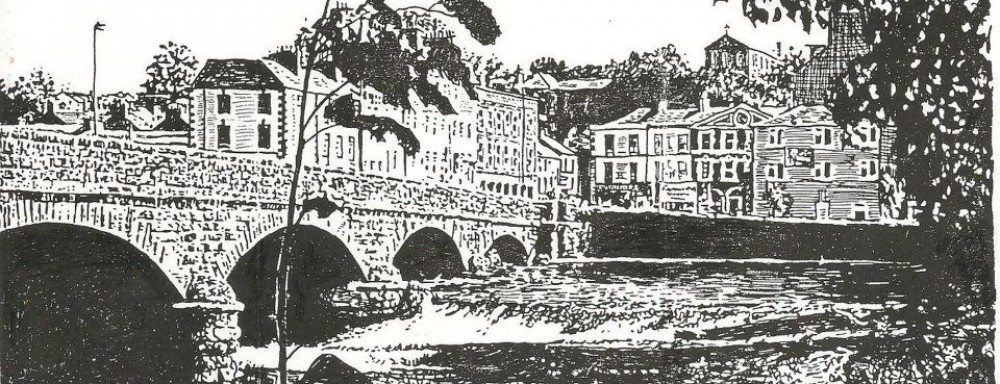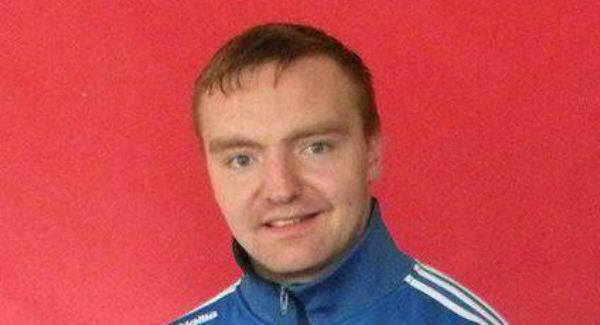 “I think it’s disgusting,” says Mother and Baby Home survivor Sheila O’Byrne of plans to build an apartment block on the site of the Good Shepherd Magdalene Laundry in Cork’s Sunday’s Well. “When a dog dies, it’s treated better and it’s buried better.” By Donal O’Keeffe.
“I think it’s disgusting,” says Mother and Baby Home survivor Sheila O’Byrne of plans to build an apartment block on the site of the Good Shepherd Magdalene Laundry in Cork’s Sunday’s Well. “When a dog dies, it’s treated better and it’s buried better.” By Donal O’Keeffe.
Sheila O’Byrne lives in a lovely house off Blarney Street. A Dubliner who has made Cork her home for 30 years, Sheila’s walls are covered in photos of family and friends, certificates and documentation of her considerable achievements, and samples of her poetry.
Sheila was 19 when she was sent to St Patrick’s Mother and Baby Home on Dublin’s Navan Road in 1976 for the crime of being pregnant. She hasn’t seen her son since he was a little baby, taken from her arms and sold by the nuns. He’d be 41 now, wherever he is. Sheila never married, never had any other kids. “Not after what was done to me,” she says.
“I was at a dance and went back with friends of ours, back to their place. It just happened. Nobody told us about the birds and the bees! When I found out, I was in shock. My Da idolized the ground I walked on, but he went mad.”
Sheila was sent to live with a family in Greystones, but she wasn’t happy there.
“You had these private couples who would take pregnant women in, and they were paid by the State. The mother of the wife was a midwife, and the plan was she would take my baby.
“This was arranged by the Monsignor in Sandymount. The medical, the religious, the State, all in it together, like one big co-op.”
Sheila sneaked out and cashed in mineral bottles for the price of her bus-fare. Then she discovered the buses weren’t running, due to a bad storm, and she had to walk the 20 miles from Greystones to a friend’s house in Clondalkin.
“I walked through fields and fields till I got there. When my friend opened the door, I collapsed in her arms with the exhaustion.”
From there, Sheila was sent to St Patrick’s on the Navan Road.
“Where else had I to go? I couldn’t go back home. There were no choices! Your family wouldn’t take you back. You were like a leper. A landlord wouldn’t take you in.
“You weren’t told that you had a right to keep your baby. They never told you. Just sign here.”
In St Patrick’s, Sheila had a little friend called Joyce, maybe 15 months old.
“I can still see her little polka-dot white and navy dress. The nurse came in to take her away, and Joyce was screaming my name. And I watched Joyce go, and I was telling her ‘It’ll be alright, Joyce.’
“And the nurse said ‘This’ll get you ready, Sheila, for when it’s your turn. Off you pop now, back to your work.’”
Sheila says she stood up for others, and got a few scars for it.
She recalls a young woman who came in, covered with lice. Sheila went looking for the woman who worked as an overseer in St Patrick’s, but couldn’t find her. So Sheila went into the kitchen and got a matchbox. Into it, she put two lice from the young woman’s head.
“Up I went to Sister ‘Rosaleen’ with the lice in the box, and do you know what she said to me? ‘They should be glad that we took them in.’ She never mentioned they were subsidised by the State, or they wouldn’t have taken us in at all.
“‘Go back to your work,’ says she, ‘I’ll see to this.’
“So the next day, I came down from the nursery. I used to get the food, because I’d look after the babies. I’d go into the kitchen and the only thing I was allowed say was ‘I’m here for the food’. Nothing else.
“And she comes down, (the overseer) and she says ‘Who went above my authority?’ She went into the kitchen and she grabbed the slops bin and the rubbish bin and she mixed them together and threw it on the floor. She started slapping me around, and smacked my head off the wall. Kept smacking the side of my head off the wall.
“I was pumping, my nose was pumping.
“She kept punching me. She said ‘You’ll pick that up off the floor’. I said ‘I won’t’. She said [of the blows] ‘You’re making me hurt myself.’
Eventually, two other women picked the rubbish up.
“We worked from dawn till dusk, from seven in the morning straight through. The only time we got a break was for Mass on Sunday morning.”
Looking at photographs of St Patrick’s, Sheila points to the chapel, the residential section – “Look at the bars on the windows” – and “the reject ward” where disabled children were kept. “Bring that to the reject ward.”
When Sheila went into labour, she was to “walk around the grounds. I was lucky the sun was in my favour and it wasn’t raining. I was left on my own. I could have died.
“One nurse, a real villain, she said to me, ‘You’ll pay for your sins now’.
“The doctor had to be called, I was having difficulty. Forceps. I was lucky I didn’t die. There was no anaesthetic, no ante-natal care, nothing.”
Sheila’s baby was born, and she wasn’t allowed to touch him.
“The only time I was allowed touch him, the nurse brought him up into the chapel for his christening. Just to hold him in your arms once, and then he was taken.
“My Daddy gave me the money to pay for the christening. And then do you know what Mr Priest says?
“He said to me, ‘Well, Sheila, if you haven’t got the money, there’s other ways we can sort this out’. And he reached over and he touched my left breast.
“I said ‘You’re alright, Father, I have my money. I’m paying in full.’
“And the nurse came straight in and took my baby off me. ‘Back to your work.’”
Sheila’s father signed her out, after a complete year. “Only for my Daddy, I’d never have got out.”
The last time Sheila saw her son, he was three months old. After she came home, she went to visit him in Sion Hill, in Blackrock. She wasn’t allowed to touch him.
“I said ‘I just came to say goodbye to you, and I hope everything will be alright. I can’t do anything.’ I was in bits.
“When I came home, it was back to normal. Nothing was mentioned.”
30 years ago, Sheila moved to Cork. For a time, she struggled with homelessness, working six days a week in CIT yet sleeping in parked buses.
Sheila has a replica of her old uniform, a white apron over a brown smock dress. She wore it at a demonstration in Tuam. Sheila has made it her life’s work to be a support to her fellow survivors. She says she’s outside Leinster House every Friday for the Tuam Babies, and the Magdalene Laundry and Mother and Baby Home survivors.
Sheila lives near the former Good Shepherd Magdalene Laundry in Sunday’s Well, and feels the women in the mass grave there should be exhumed, identified by DNA, and given a proper burial. She says she is sickened that a place of such horror might be concreted over and have an apartment block built on it. She thinks it should be put to better use.
“I’d like to see flats for our Magdalene survivors, so they’re not living in squalor, or homeless. I’d also like to see a centre there, a training facility, and a museum of the experience of Magdalene survivors. And flats for the elderly and the homeless.”
Originally published in the Evening Echo on Thursday 18 January 2018.


 “The album has been received really well, I feel very grateful for that. I think no matter what, I would always make music, but to have your work critically well received is the
“The album has been received really well, I feel very grateful for that. I think no matter what, I would always make music, but to have your work critically well received is the “I spent the year attempting to make people aware – in Ireland and abroad – that I put out an album in September, 2016, entitled ‘Living In The Land Of Love’,” says Wedel. “I had a really great and illuminating time performing gigs in Europe. But it was also a year of anniversaries and landmarks for me. I celebrated 30 years of working as a professional musician. My wife, Eileen and I celebrate 30 years of marriage and it was our first year of being grandparents.
“I spent the year attempting to make people aware – in Ireland and abroad – that I put out an album in September, 2016, entitled ‘Living In The Land Of Love’,” says Wedel. “I had a really great and illuminating time performing gigs in Europe. But it was also a year of anniversaries and landmarks for me. I celebrated 30 years of working as a professional musician. My wife, Eileen and I celebrate 30 years of marriage and it was our first year of being grandparents. They recently played Bagots Hutton Dublin as part of their Bagots Hutton Live series and the album will feature their interpretation of American folk rock classics by Neil Young,
They recently played Bagots Hutton Dublin as part of their Bagots Hutton Live series and the album will feature their interpretation of American folk rock classics by Neil Young,

 “All 12 songs have received airplay and reached over 4 million listeners,” O Caoimh says. “And the singles ‘
“All 12 songs have received airplay and reached over 4 million listeners,” O Caoimh says. “And the singles ‘

 Two weeks before she died, Kathleen called to the ‘Hope for the Homeless’ tent outside Brown Thomas and asked volunteers if they could give her pyjamas. None were available, but she told one volunteer that she was being hospitalised for a medical procedure and she was looking forward to spending a week in warmth and comfort, in a decent bed and getting regular meals. The volunteer said Kathleen seemed close to tears of happiness.
Two weeks before she died, Kathleen called to the ‘Hope for the Homeless’ tent outside Brown Thomas and asked volunteers if they could give her pyjamas. None were available, but she told one volunteer that she was being hospitalised for a medical procedure and she was looking forward to spending a week in warmth and comfort, in a decent bed and getting regular meals. The volunteer said Kathleen seemed close to tears of happiness.



